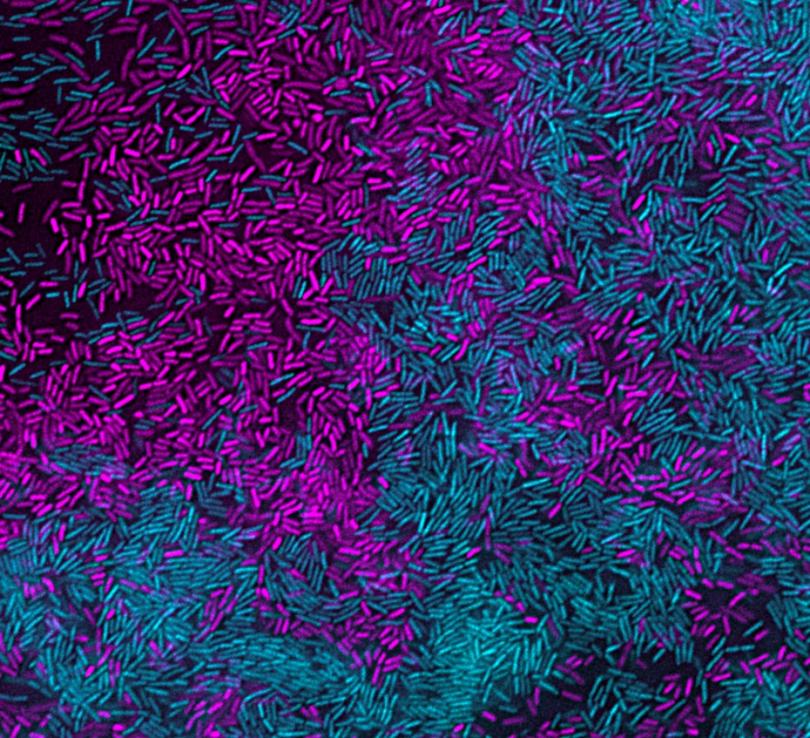Department of Biology Seminar
Faculty Research Seminar - Simpson
Faculty Research Seminar - Simpson
"The Hidden Flexibility of the Genetic Code and its Untapped Potential"
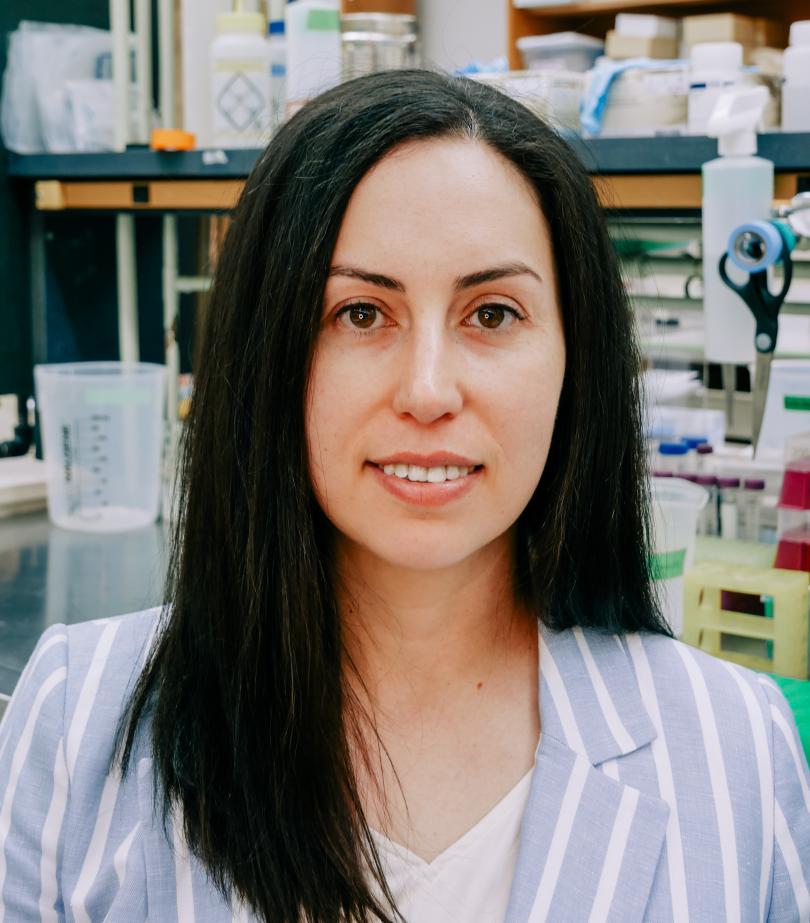 Dr. Veronika Kivenson
Dr. Veronika Kivenson
Bio:
Veronika Kivenson is a microbiologist studying genetic code plasticity in bacteria and archaea. Her research examines these processes in diverse settings, ranging from deep-sea sediments to the human microbiome. She earned her Ph.D. from UC Santa Barbara with support from an NSF Graduate Research Fellowship, followed by a Simons Foundation Postdoctoral Fellowship at Oregon State University. Most recently, as a postdoc at UC Berkeley, she characterized the first alternative genetic code in Archaea; this work was published in Science. Her future research focuses on uncovering new genetic codes, the evolutionary drivers of code flexibility and their applications.
Abstract:
Microbes play a central role in global ecosystems and human health. Their evolutionary success relies on various molecular strategies, including genetic code flexibility. This suite of processes, which includes recoding, frameshifting and codon reassignment, allows them to dynamically interpret genetic information and create novel functions. These processes, however, are largely overlooked: Standard genomic tools are built on the assumption of a largely static, universal code. My recent work demonstrates that alternative genetic codes can evolve rapidly, suggesting that the extent of genetic code flexibility has been significantly underestimated. In the course of that study, I also uncovered numerous other cases of genetic code flexibility and developed the computational framework to find these occurrences systematically. My research program will focus on defining the full extent of genetic code flexibility, characterizing its evolutionary drivers and applying this fundamental knowledge to address challenges in climate change, human health and synthetic biology.
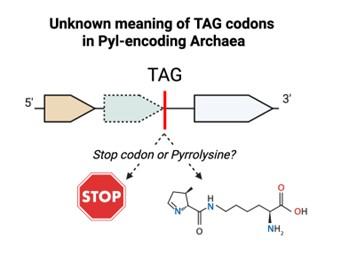
"The Hidden Flexibility of the Genetic Code and its Untapped Potential"
 Dr. Veronika Kivenson
Dr. Veronika Kivenson
Bio:
Veronika Kivenson is a microbiologist studying genetic code plasticity in bacteria and archaea. Her research examines these processes in diverse settings, ranging from deep-sea sediments to the human microbiome. She earned her Ph.D. from UC Santa Barbara with support from an NSF Graduate Research Fellowship, followed by a Simons Foundation Postdoctoral Fellowship at Oregon State University. Most recently, as a postdoc at UC Berkeley, she characterized the first alternative genetic code in Archaea; this work was published in Science. Her future research focuses on uncovering new genetic codes, the evolutionary drivers of code flexibility and their applications.
Abstract:
Microbes play a central role in global ecosystems and human health. Their evolutionary success relies on various molecular strategies, including genetic code flexibility. This suite of processes, which includes recoding, frameshifting and codon reassignment, allows them to dynamically interpret genetic information and create novel functions. These processes, however, are largely overlooked: Standard genomic tools are built on the assumption of a largely static, universal code. My recent work demonstrates that alternative genetic codes can evolve rapidly, suggesting that the extent of genetic code flexibility has been significantly underestimated. In the course of that study, I also uncovered numerous other cases of genetic code flexibility and developed the computational framework to find these occurrences systematically. My research program will focus on defining the full extent of genetic code flexibility, characterizing its evolutionary drivers and applying this fundamental knowledge to address challenges in climate change, human health and synthetic biology.

"The Hidden Flexibility of the Genetic Code and its Untapped Potential"
 Dr. Veronika Kivenson
Dr. Veronika Kivenson
Bio:
Veronika Kivenson is a microbiologist studying genetic code plasticity in bacteria and archaea. Her research examines these processes in diverse settings, ranging from deep-sea sediments to the human microbiome. She earned her Ph.D. from UC Santa Barbara with support from an NSF Graduate Research Fellowship, followed by a Simons Foundation Postdoctoral Fellowship at Oregon State University. Most recently, as a postdoc at UC Berkeley, she characterized the first alternative genetic code in Archaea; this work was published in Science. Her future research focuses on uncovering new genetic codes, the evolutionary drivers of code flexibility and their applications.
Abstract:
Microbes play a central role in global ecosystems and human health. Their evolutionary success relies on various molecular strategies, including genetic code flexibility. This suite of processes, which includes recoding, frameshifting and codon reassignment, allows them to dynamically interpret genetic information and create novel functions. These processes, however, are largely overlooked: Standard genomic tools are built on the assumption of a largely static, universal code. My recent work demonstrates that alternative genetic codes can evolve rapidly, suggesting that the extent of genetic code flexibility has been significantly underestimated. In the course of that study, I also uncovered numerous other cases of genetic code flexibility and developed the computational framework to find these occurrences systematically. My research program will focus on defining the full extent of genetic code flexibility, characterizing its evolutionary drivers and applying this fundamental knowledge to address challenges in climate change, human health and synthetic biology.

"Bacterial Lipids in Plant-microbe Symbiosis"
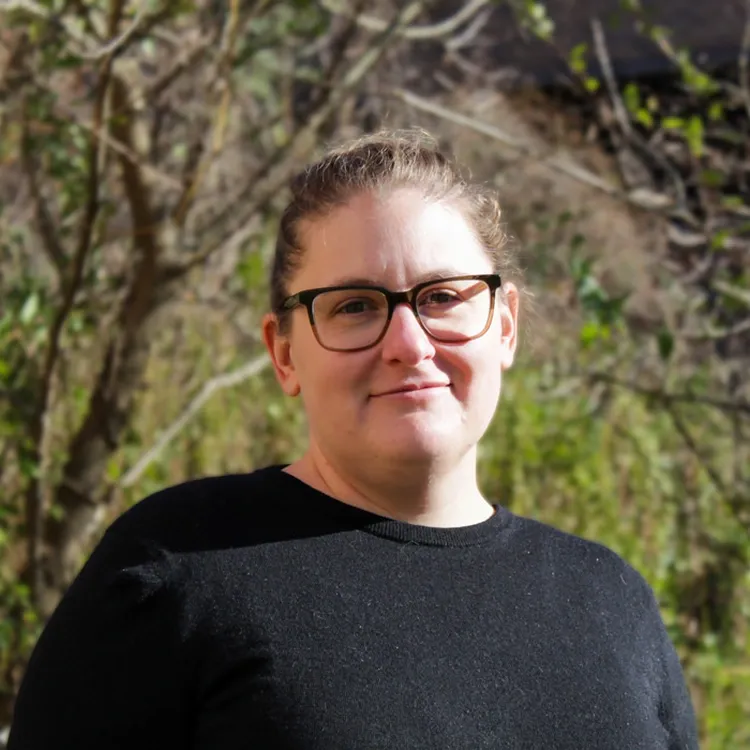 Dr. Brittany Belin
Dr. Brittany Belin
Bio:
Dr.Brittany Belin is a graduate of Notre Dame (B.S., biochemistry & philosophy) and the University of California San Francisco (Ph.D., bBiophysics), where she studied the actin cytoskeleton using quantitative microscopy, cell biology and computational analysis. For her postdoc work, she transitioned to studying plant-bacteria symbiosis at Caltech, and she opened her own lab studying lipid biophysics in plant-bacteria symbiosis at the Carnegie Institution for Science in 2020. She is interested in symbiosis and microbial cell biology in all of its forms, and she loves learning and teaching about emerging models for studying these topics.
Abstract:
Life is powered by fixed carbon and nitrogen, and the exchange of these elements is a common basis for bacteria-eukaryote symbioses. The Bradyrhizobia are a globally dominant soil bacteria that form nitrogen-carbon exchange symbioses with peanuts, soybeans and other legumes, and work in our lab and others has shown that these symbioses require cholesterol-like bacterial lipids known as hopanoids.
The mechanisms through which hopanoids participate in symbiosis are not clear, but our preliminary data suggest that hopanoids:
- Participate in the early stages of the B. diazoefficiens-legume interaction by promoting bacterial motility and signal secretion.
- Regulate bacterial membrane biophysics in a manner similar to that of cholesterol in animal cells.
These findings suggest a fundamental connection between bacterial membrane biophysics and successful host-microbe interactions that likely is mediated by diverse, membrane-rigidifying “secondary lipids” throughout the bacterial domain of life.
"Bacterial Lipids in Plant-microbe Symbiosis"
 Dr. Brittany Belin
Dr. Brittany Belin
Bio:
Dr.Brittany Belin is a graduate of Notre Dame (B.S., biochemistry & philosophy) and the University of California San Francisco (Ph.D., bBiophysics), where she studied the actin cytoskeleton using quantitative microscopy, cell biology and computational analysis. For her postdoc work, she transitioned to studying plant-bacteria symbiosis at Caltech, and she opened her own lab studying lipid biophysics in plant-bacteria symbiosis at the Carnegie Institution for Science in 2020. She is interested in symbiosis and microbial cell biology in all of its forms, and she loves learning and teaching about emerging models for studying these topics.
Abstract:
Life is powered by fixed carbon and nitrogen, and the exchange of these elements is a common basis for bacteria-eukaryote symbioses. The Bradyrhizobia are a globally dominant soil bacteria that form nitrogen-carbon exchange symbioses with peanuts, soybeans and other legumes, and work in our lab and others has shown that these symbioses require cholesterol-like bacterial lipids known as hopanoids.
The mechanisms through which hopanoids participate in symbiosis are not clear, but our preliminary data suggest that hopanoids:
- Participate in the early stages of the B. diazoefficiens-legume interaction by promoting bacterial motility and signal secretion.
- Regulate bacterial membrane biophysics in a manner similar to that of cholesterol in animal cells.
These findings suggest a fundamental connection between bacterial membrane biophysics and successful host-microbe interactions that likely is mediated by diverse, membrane-rigidifying “secondary lipids” throughout the bacterial domain of life.
"Bacterial Lipids in Plant-microbe Symbiosis"
 Dr. Brittany Belin
Dr. Brittany Belin
Bio:
Dr.Brittany Belin is a graduate of Notre Dame (B.S., biochemistry & philosophy) and the University of California San Francisco (Ph.D., bBiophysics), where she studied the actin cytoskeleton using quantitative microscopy, cell biology and computational analysis. For her postdoc work, she transitioned to studying plant-bacteria symbiosis at Caltech, and she opened her own lab studying lipid biophysics in plant-bacteria symbiosis at the Carnegie Institution for Science in 2020. She is interested in symbiosis and microbial cell biology in all of its forms, and she loves learning and teaching about emerging models for studying these topics.
Abstract:
Life is powered by fixed carbon and nitrogen, and the exchange of these elements is a common basis for bacteria-eukaryote symbioses. The Bradyrhizobia are a globally dominant soil bacteria that form nitrogen-carbon exchange symbioses with peanuts, soybeans and other legumes, and work in our lab and others has shown that these symbioses require cholesterol-like bacterial lipids known as hopanoids.
The mechanisms through which hopanoids participate in symbiosis are not clear, but our preliminary data suggest that hopanoids:
- Participate in the early stages of the B. diazoefficiens-legume interaction by promoting bacterial motility and signal secretion.
- Regulate bacterial membrane biophysics in a manner similar to that of cholesterol in animal cells.
These findings suggest a fundamental connection between bacterial membrane biophysics and successful host-microbe interactions that likely is mediated by diverse, membrane-rigidifying “secondary lipids” throughout the bacterial domain of life.
"Bacterial Multicellularity in Polymicrobial Environments"
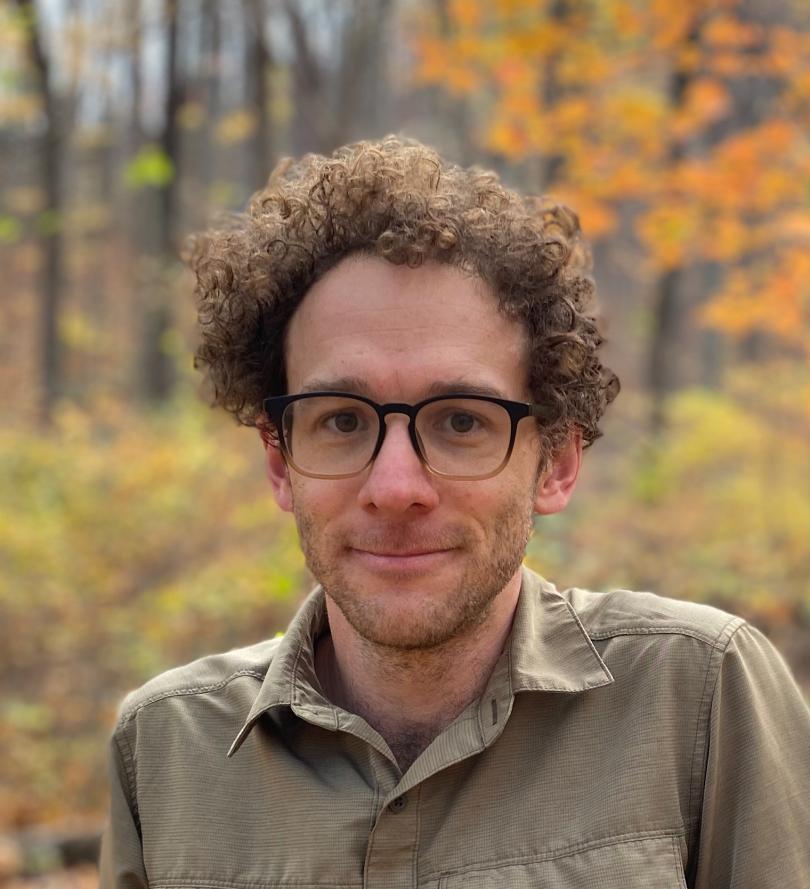 Dr. Stefan Katharios-Lanwermeyer
Dr. Stefan Katharios-Lanwermeyer
Bio:
Dr. Stefan Katharios-Lanwermeyer is a postdoctoral researcher at the National Institutes of Health where he supported a PRAT postdoctoral Fellowship. He received his PhD in Microbiology from Dartmouth College where he studied the maintenance of bacterial biofilm under his mentor, Dr. George O’Toole. Currently, Katharios studies bacterial multicellularity in polymicrobial environments under his postdoctoral mentor Dr. Anupama Khare. His goal is to develop a model system to characterize how interspecies interactions result in multicellularity among cohabitating bacteria.
Abstract:
Microorganisms commonly exist in polymicrobial communities, where they can respond to interspecies secreted molecules by altering behaviors and physiology. However, the underlying mechanisms remain underexplored. I have investigated interactions between Stenotrophomonas maltophilia and Pseudomonas aeruginosa, co-infecting bacterial species pathogens found in pneumonia and chronic lung infections, such as in cystic fibrosis. We found that S. maltophilia forms large protective multicellular aggregates upon exposure to P. aeruginosa secreted factors. E
Experimental evolution for lack of aggregation selected for fimbrial mutations, and we found that fimbriae are required on both interacting S. maltophilia cells for aggregation. Untargeted metabolomics and targeted validations revealed that the quorum sensing molecule Pseudomonas quinolone signal (PQS) directly induced S. maltophilia aggregation, and co-localized with the aggregates. Further, in co-culture with P. aeruginosa, wild-type S. maltophilia formed aggregates, resulting in up to 75-fold increased survival from P. aeruginosa competition compared to fimbrial mutants.
Finally, multiple other bacterial species similarly aggregated upon exposure to P. aeruginosa PQS, indicating a more general response. Collectively, our work identifies a novel multispecies interaction where a quorum sensing molecule from a co-infecting pathogen is sensed as a ‘danger’ signal, thereby inducing a protective multicellular response. This work provides a basis to expand to a three-species model system in which I aim to investigate bacterial multicellularity and interspecies interactions as bacteria respond to secreted factors produced by cohabitating microbes.
